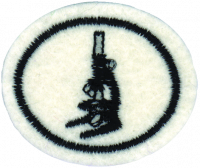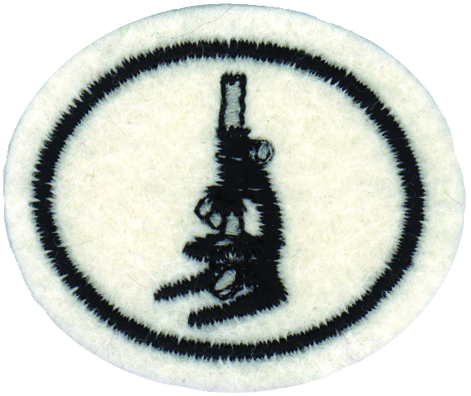Difference between revisions of "AY Honors/Microscopic Life/Answer Key/es"
From Pathfinder Wiki
< AY Honors | Microscopic LifeAY Honors/Microscopic Life/Answer Key/es
(Created page with "</noinclude> <!-- 3. Saber cómo calcular el aumento de un microscopio compuesto. Calcular la magnificación del microscopio que utiliza para esta especialidad. -->") |
|||
| (3 intermediate revisions by 2 users not shown) | |||
| Line 1: | Line 1: | ||
| − | + | {{HonorSubpage}} | |
| − | + | <!--{{Honor_Master|honor=Microscopic Life|master=Naturalist|group=Fauna}}--> | |
| − | {{ | + | <!--{{Honor_Master|honor=Microscopic Life|master=Zoology|group=Fauna}}--> |
| − | |||
| − | |||
| − | |||
| − | |||
| − | |||
| − | |||
| − | |||
| − | }} | ||
| − | |||
| − | {{Honor_Master | ||
| − | {{Honor_Master | ||
| − | |||
| − | |||
| − | |||
| − | |||
| − | |||
<section begin="Body" /> | <section begin="Body" /> | ||
{{ansreq|page={{#titleparts:{{PAGENAME}}|2|1}}|num=1}} | {{ansreq|page={{#titleparts:{{PAGENAME}}|2|1}}|num=1}} | ||
| Line 59: | Line 43: | ||
{{ansreq|page={{#titleparts:{{PAGENAME}}|2|1}}|num=4}} | {{ansreq|page={{#titleparts:{{PAGENAME}}|2|1}}|num=4}} | ||
<noinclude></noinclude> | <noinclude></noinclude> | ||
| − | <!-- 4. | + | <!-- 4. Definir los siguientes términos microscópicos: diapositiva. cubreobjetos, portaobjetos, fijar, coloración, aceite de inmersión, unicelular, multicelular, cilios, flagelos, plancton. --> |
| − | |||
| − | |||
| − | |||
| − | |||
| − | |||
| − | |||
| − | |||
| − | |||
| − | |||
| − | |||
| − | |||
<noinclude></noinclude> | <noinclude></noinclude> | ||
| Line 76: | Line 49: | ||
{{ansreq|page={{#titleparts:{{PAGENAME}}|2|1}}|num=5}} | {{ansreq|page={{#titleparts:{{PAGENAME}}|2|1}}|num=5}} | ||
<noinclude></noinclude> | <noinclude></noinclude> | ||
| − | <!-- 5. | + | <!-- 5. Recoger muestras de agua (de estanques, arroyos, zanjas, cunetas, charcos, etc.) y buscar organismo vivos usando un microscopio con un mínimo aumento de 100X. Dibujar cinco de estos organismos con la mayor precisión posible. En la medida de los posible, identificar y etiquetar sus diagramas (incluyendo el aumento utilizado). --> |
| − | |||
{{clear}} | {{clear}} | ||
| Line 93: | Line 65: | ||
{{ansreq|page={{#titleparts:{{PAGENAME}}|2|1}}|num=7}} | {{ansreq|page={{#titleparts:{{PAGENAME}}|2|1}}|num=7}} | ||
<noinclude></noinclude> | <noinclude></noinclude> | ||
| − | <!-- 7. Conocer los reinos que tienen formas de vida microscópicas y conocer a dos organismos de cada una de ellas. --> | + | <!-- 7. Conocer los reinos que tienen formas de vida microscópicas y conocer a dos organismos de cada una de ellas. --> |
{{clear}} | {{clear}} | ||
| Line 118: | Line 90: | ||
==Referencias== | ==Referencias== | ||
| − | |||
<noinclude></noinclude> | <noinclude></noinclude> | ||
| − | + | {{CloseHonorPage}} | |
Latest revision as of 00:47, 26 July 2022
Vida microscópica
Nivel de destreza
2
Año
1994
Version
01.12.2025
Autoridad de aprobación
Asociación General
1
Hacer una lista de cuatro grandes clases de microscopios. ¿Cuáles son algunas de las características de cada uno? Ser capaz de identificar las diferentes clases de microscopios en imágenes o visitar a un laboratorio en una universidad o un industria que utiliza estos microscopios.
2
Ser capaz de identificar las siguientes partes de un microscopio y explicar o demostrar la función de cada uno: ocular, objetivo, cabezal, revolver, portaobjetos, condensador, base, enfoque, el brazo.
3
Saber cómo calcular el aumento de un microscopio compuesto. Calcular la magnificación del microscopio que utiliza para esta especialidad.
4
Definir los siguientes términos microscópicos: diapositiva. cubreobjetos, portaobjetos, fijar, coloración, aceite de inmersión, unicelular, multicelular, cilios, flagelos, plancton.
5
Recoger muestras de agua (de estanques, arroyos, zanjas, cunetas, charcos, etc.) y buscar organismo vivos usando un microscopio con un mínimo aumento de 100X. Dibujar cinco de estos organismos con la mayor precisión posible. En la medida de los posible, identificar y etiquetar sus diagramas (incluyendo el aumento utilizado).
6
Dibujar y etiquetar una célula que incluya las siguientes partes: membrana celular, núcleo y citoplasma.
7
Conocer los reinos que tienen formas de vida microscópicas y conocer a dos organismos de cada una de ellas.
8
Mencionar al menos un ejemplo de cómo la vida microscópica es importante para: la alimentación humana, la salud humana, la medicina y otros organismos.
9
Dar al menos tres hábitos saludables que se han establecido como resultado directo de la vida microscópica nociva. Poner estos hábitos en práctica.


